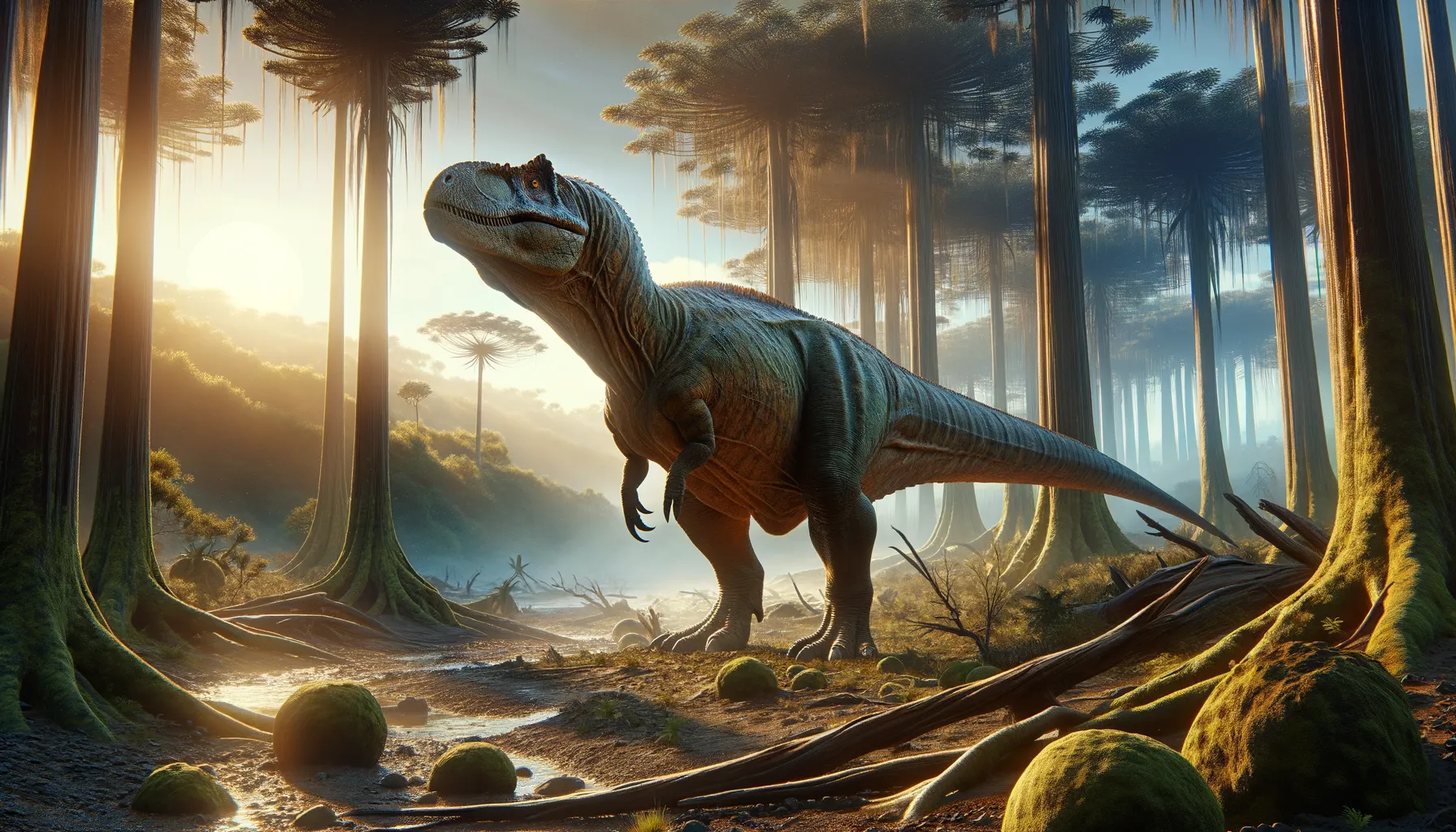
Thanos
Mighty predator of the ancient world.
Period
triassic
Length
Measured around 30 to 35 feet long.
Height
Approximately 10 to 12 feet tall at the hips.
Weight
Estimated around 5 to 6 tons.
Thanos was a large theropod dinosaur from the Late Cretaceous period. Discovered in Brazil, it belonged to a group known as abelisaurids—a family of bipedal carnivorous dinosaurs known for their short arms and stocky bodies. Though only partially known from limited fossil evidence, Thanos still provides valuable insights into the diversity of the South American dinosaur fauna during its time.
Diet
Thanos was a carnivore, preying upon other large dinosaurs in its environment. It likely targeted herbivorous dinosaurs, using its powerful jaws and sharp teeth to secure meals.
Hunting
As an active hunter, Thanos might have used surprise tactics, ambushing its prey from hidden spots. Its robust build would enable it to tackle large herbivores, overpowering them with strength and agility.
Environmental challenges
During the Late Cretaceous, Thanos faced a changing landscape with fluctuating temperatures and shifting ecosystems. Periodic volcanic activity and climate variations could have influenced vegetation and prey availability, impacting its survival strategy. These environmental challenges would necessitate adaptation and resilience to thrive in its habitat.
Speed
Likely moderate, similar to other large theropods.
Lifespan
Estimated around 20 to 30 years.
First discovery
Described in 2018 from fragmentary remains in Brazil.
Fun Facts
- Thanos is a genus of theropod dinosaur found in Brazil.
- It was named after the famous Marvel supervillain Thanos.
- Thanos lived during the Late Cretaceous period, about 70 million years ago.
- The full species name of this dinosaur is Thanos simonattoi.
- Thanos's fossil was discovered in 2014 and its name was officially published in 2018.
- The dinosaur was relatively small compared to the giant theropods, estimated to be around 5.5 meters long.
- Thanos is part of the abelisaurid family, known for their short arms and strong legs.
Growth and Development
Thanos likely grew rapidly during the juvenile stages to reach its large size, benefiting from the abundance of prey. Its development involved physical changes, such as strengthened bones and muscle mass, enhancing its predatory capabilities. Understanding these patterns helps in reconstructing its lifestyle and ecological role.
Habitat
Thanos inhabited diverse environments, including semi-arid regions and lush forests, enriching its ecological niche. It roamed vast territories, adapting to different terrains and climates across South America. The varied habitat allowed access to a range of prey and sheltering options.
Interaction with other species
Thanos may have competed with other large predators, establishing territories and dominance hierarchies. Symbiotic relationships with scavengers and smaller carnivores were also possible, highlighting a complex ecosystem with interconnected species dynamics. These interactions played a crucial role in maintaining ecological balance.
Natural lifespan
In optimal conditions, it might have lived around 25 years.
Reproduction
Thanos likely laid eggs, similar to other theropods, in protected nests or burrows. Parental care was possibly minimal, with offspring hatching precocially, ready to fend for themselves. Egg-laying strategies would ensure the survival of the species amidst growing environmental pressures.
Social behaviour
Thanos might have been a solitary hunter, but evidence of social behavior cannot be ruled out entirely. Some theropods showed signs of group interaction, potentially for hunting or mating purposes. Its social structure would significantly impact its predatory success and survival.
Fossil locations
Fossils of Thanos, though limited, have been primarily found in Brazil's Bauru Basin. These discoveries add to understanding the region's Late Cretaceous biodiversity. Future finds could provide more insights into its broader geographic distribution.
